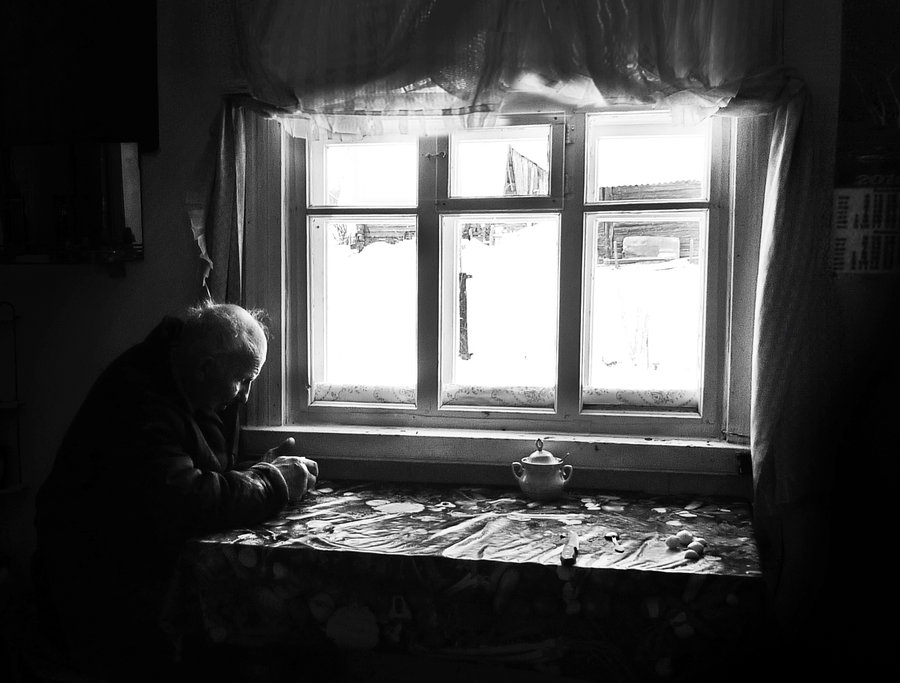Let’s Grow Old, So We Can Get Sick
Let’s Grow Old, So We Can Get Sick
by Wyll Everett ’14
And stay sick because there will not be anyone there to help us.
Along with its statistics on life expectancy (a list the United States does not lead), the World Health Organization (WHO) calculates a Disability-Adjusted Life Expectancy (DALE) for most countries. The DALE represents how many healthy years someone born in the U.S. can expect to live on average, a measure that is always below life expectancy in a country. Even though life expectancy in the U.S. has been rising steadily since the early twentieth century, the DALE affirms that a fraction of this “gained” life will most likely be devoted to illness. Illness will consume more of Americans’ lives than those in any other industrialized nation. During our final years we will live with illness because death today is not often caused by the terrible, but quick, infections of the past.
The majority of death in the U.S. comes from chronic diseases, the three most prevalent being heart disease, cancer, and lower respiratory diseases, according to the Centers for Disease Control (CDC). This trend has been growing steadily for years. We would imagine that the close to 20 percent of its total expenditures which the U.S. spent on health care in 2011 would be working to address this clear health issue in our nation. Unfortunately, this is not true.
The chronic illness plaguing approximately half of the U.S. population will need to be addressed with new medical facilities, treatments, and mentalities. But this change can be facilitated only if we actually train people to treat chronic diseases. As of now, the goal of Western medicine is to cure. And if medicine does not currently have a cure, the medical community will bide its time by keeping people out of the hospital. The U.S. health care system is designed for acute care; if there is an immediate problem (e.g. heart attack, unbearable pain) physicians will treat it, so that a patient may go home.

Chronic diseases are the cause of a major portion of hospital visits in the U.S. The immediate problem in these visits is that a patient still has a chronic disease when he leaves the hospital. Because physicians cannot reliably provide a cure, they simply alleviate symptoms to a tolerable level. When these symptoms become unbearable again, patients return to the doctor and he will fix them again, for the time being. This means that the daily treatment of chronic disease — necessary because of the daily struggles of chronic disease — is performed by the non-medically-trained, ill patients. And right now, the U.S. does not provide a better option because, truly, no one is trained to provide this type of care.
Medical schools teach our future doctors what these chronic diseases are, why they happen, and how to handle them when approached by a symptomatic patient. Then students will train on the job, practicing treating chronic diseases. But where does all of this training occur? Well, where we like to think most sick people are, in a hospital. The only time a physician sees someone for heart disease is when that person just had (or is very close to having) a heart attack. Doctors learn to treat the attack and stabilize the patient, and then the patient gets to leave. No part of the medical curriculum includes how to help a patient, over time, deal with the daily hassles of living with chronic disease. The most trained caregivers in medicine in our country are not trained to provide the adequate consistent care needed by aging patients.
Even the doctors who are the most consistent medical caregivers in a patient’s life, primary care physicians, are trained in the same way. These doctors usually train in hospitals or large practices and patients — more critically — generally see them at most twice a year. So when the Affordable Care Act takes full effect, with its provision to provide financial incentives to motivate medical students to become primary care physicians, are we truly gaining more doctors that can provide the help needed by those suffering from chronic diseases? The answer is clearly, no.
The closest we have to daily caregivers are nurses, nursing assistants, and particularly home care aides that visit patients regularly at home or look after them in nursing homes. They are critical in the health care delivery system but these professionals receive even less training than physicians do. And much of their work is helping patients with daily tasks that are now difficult (e.g. bathing, eating), not management of a disease or its symptoms. Simply, we do not train anybody to help the millions of people in the U.S. that suffer from the daily trials of living with a chronic illness.
So let us enjoy our longer lives as best we can. In the end we will be sick and, most days, we will be stuck dealing with our medical issues without much help.
-
Categories:
- Sociology